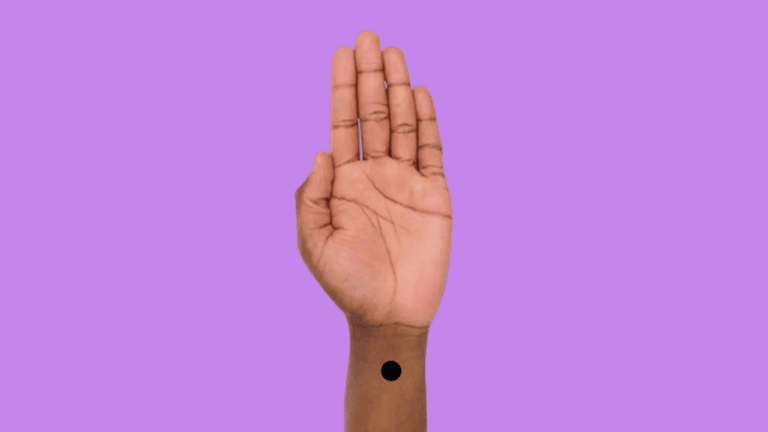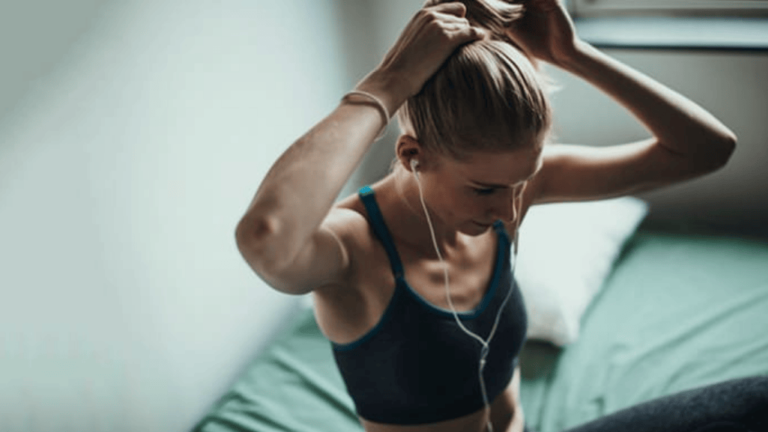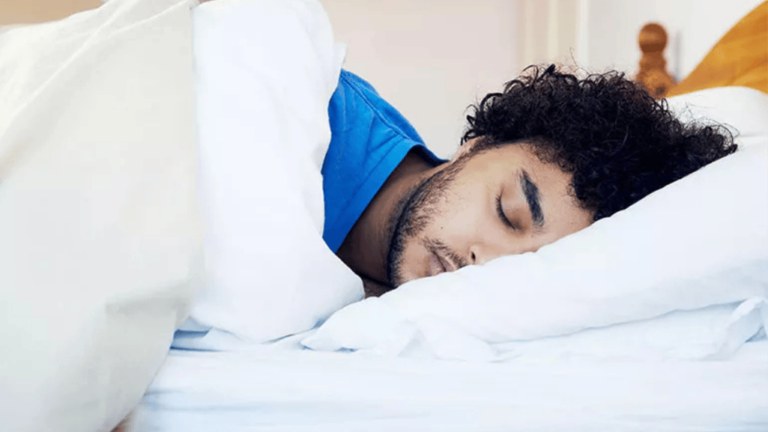Heart rate variability (HRV) is a key metric that shows how well our body adapts. It looks at the time between heartbeats, giving us clues about our autonomic nervous system. During sleep, HRV changes a lot, with spikes happening in different stages. Watching these spikes can tell us a lot about our health.
The autonomic nervous system controls things like heart rate and breathing. It has two parts: the sympathetic nervous system, which gets us ready to fight or flee, and the parasympathetic nervous system, which helps us relax. The balance between these parts affects HRV, with too much sympathetic leading to lower HRV and health problems.
Sleep has different stages, each with its own brain activity and body changes. Non-REM sleep, with stages 1, 2, and 3, sees heart rate slow down and HRV go up. REM sleep, with its vivid dreams and quick eye movements, has more heart rate and HRV changes. These changes in HRV during sleep tell us a lot about how our body recovers.
Key Takeaways
- HRV measures the variation in time between heartbeats, reflecting the body’s adaptability to situations.
- HRV changes during sleep, with spikes occurring in different sleep stages.
- The autonomic nervous system, consisting of the sympathetic and parasympathetic branches, influences HRV.
- Non-REM sleep is associated with a decrease in heart rate and an increase in HRV, while REM sleep exhibits more variability.
- Monitoring HRV during sleep can provide insights into overall health and well-being.
Understanding Heart Rate Variability (HRV)
Heart rate variability (HRV) is a health metric that’s getting more attention. It’s the change in time between heartbeats, shown by R-R intervals on an ECG. These small changes tell us a lot about how our autonomic nervous system works.
Definition of HRV
HRV is a way to measure how heart rate changes from beat to beat. It shows how our “fight or flight” system and our relaxation system work together. A higher HRV means our body can adapt better to different situations.
Factors Influencing HRV
Many things can change HRV, like age, genes, lifestyle, and health. HRV often goes down with age. Health issues like diabetes and high blood pressure can also affect it. Stress, anxiety, and depression can lower HRV too. But, regular exercise, a healthy diet, and enough sleep can improve it.
A study looked at 589 nights of HRV data. It found that our autonomic activity changes with our sleep cycle. But, sleep staging algorithms are not always accurate, with an error rate of 60-70%.
Importance of HRV for Health and Well-being
Watching HRV can tell us a lot about our health. A higher HRV means better heart health, emotional balance, and stress resilience. On the other hand, a low HRV might show health problems or a higher risk of some diseases.
High heart rate variability is linked to lower stress levels and increased happiness, while low heart rate variability is associated with health problems such as diabetes, high blood pressure, heart arrhythmia, asthma, anxiety, and depression.
By tracking HRV, we can see how our lifestyle and stress affect our nervous system and health. This info helps us make changes to improve our well-being. Don’t forget to replace your pillow every 1-2 years for better sleep.
The Autonomic Nervous System and HRV
The autonomic nervous system, controlled by the hypothalamus, is key to balance. It manages the sympathetic and parasympathetic systems. Heart rate variability (HRV) shows how well these systems work together. A high HRV means the body responds well, while a low HRV points to imbalance.
The sympathetic system, or “fight or flight,” makes the heart beat faster and lowers HRV. The parasympathetic system, or “rest and digest,” slows the heart and raises HRV. A balance between these systems is vital for health and heart well-being.
Sympathetic and Parasympathetic Nervous Systems
An imbalance, with the sympathetic system dominating, can harm health. It can lead to sleep issues and lower HRV. This imbalance is linked to heart problems, depression, and anxiety.
“The HRV-DETECT Study found that low HRV significantly increased the likelihood of participants having cardiac ischemia, which can lead to arrhythmia and heart attacks.”
Falling asleep boosts parasympathetic activity. Waking up increases heart rate and lowers HRV. Sleep medications can also affect HRV, making imbalance worse.
Autonomic Balance and HRV
Keeping the autonomic system in balance is essential. Poor HRV can come from stress, bad sleep, unhealthy diet, and more. To improve HRV, try regular exercise, a healthy diet, and good sleep.
- Regular exercise
- A heart-friendly diet
- Staying hydrated
- Consistent sleep patterns
- Avoid alcohol
- Try meditation and yoga
- Taking cold showers to stimulate the vagus nerve and activate the parasympathetic nervous system
Understanding the autonomic system and HRV helps us stay healthy. By focusing on balance, we can improve our overall health and well-being.
HRV During Sleep Stages
Heart rate variability (HRV) changes in different sleep stages. Knowing these changes helps us understand sleep quality and health. There are two main sleep stages: non-rapid eye movement (NREM) and rapid eye movement (REM) sleep.
Non-REM Sleep and HRV
In NREM sleep, HRV drops compared to being awake. This is because the parasympathetic nervous system takes over, making the heart rate more stable. But, deep sleep within NREM shows more beat-to-beat variability.
This variability might show the body’s repair and hormone work during deep sleep.
REM Sleep and HRV Fluctuations
REM sleep, on the other hand, sees HRV go up. The brain acts more like it does when we’re awake. This brain activity leads to heart rate changes and less beat-to-beat variability.
The sympathetic nervous system’s activity in REM sleep causes these changes. This might be linked to vivid dreams and quick eye movements.
There’s a strong link between sleep quality, HRV, and overall health. People with better sleep quality and efficiency have higher HRV when awake. Poor sleep can lead to lower HRV and health issues.
A normal resting heart rate is typically between 60 and 100 bpm, whereas a normal heart rate during sleep drops to between 40 and 50 bpm for adults.
Watching HRV during sleep can tell us about our nervous system balance. By understanding HRV in NREM and REM sleep, we can learn about our sleep and health. Tracking HRV with other sleep metrics helps spot sleep problems and improve health.
Factors Contributing to HRV Spikes While Sleeping
Many things can cause heart rate variability (HRV) spikes at night. Sleep disorders and arrhythmias are big ones. These issues mess with the balance of our nervous systems, leading to HRV changes.
Sleep Disorders and HRV
Sleep problems like obstructive sleep apnea (OSA) and insomnia really affect HRV. OSA causes airway blockages, leading to poor sleep quality and low oxygen. This makes the sympathetic nervous system work too hard, causing HRV spikes and other health issues.
Insomnia, on the other hand, leads to too much sympathetic activity and weak parasympathetic function. This results in lower HRV overall.
People with sleep apnea might face a higher risk of atrial fibrillation. This is a serious heart rhythm problem linked to stroke and heart failure. Using CPAP therapy can help manage OSA symptoms, improving HRV.
Nocturnal Arrhythmias and HRV
Nocturnal arrhythmias, like atrial fibrillation, can also cause HRV spikes at night. These irregular heart rhythms upset the balance between our nervous systems, making heart rate more variable. Other things that might lead to these issues include:
- Diet and drinks before bed, like sweets, alcohol, or caffeine
- Stress and anxiety
- Certain medications
- Underlying heart conditions
Lower HRV at night is linked to higher heart disease risks. It’s important to get good, uninterrupted sleep. This helps reduce stress on the heart and improves HRV.
hrv spikes while sleeping: Implications for Health
Heart rate variability (HRV) spikes during sleep offer insights into our health. Changes in HRV are linked to cardiovascular health, metabolic disorders, mental health, inflammation, and chronic stress.
Research shows that poor sleep quality is linked to lower HRV. This is a risk factor for heart disease. A study in Iran found that those with poor sleep had lower HRV.
Sleep disorders like obstructive sleep apnea (OSA) affect HRV. OSA causes breathing pauses and awakenings. This can lead to heart and metabolic problems.
“Globally, approximately 1 billion adults are estimated to have mild to severe sleep apnea, with some countries having a prevalence exceeding 50%.”
HRV spikes also reflect mental health. Lower HRV is linked to depression and anxiety. Chronic stress and inflammation can also reduce HRV.
Monitoring HRV during sleep helps healthcare professionals and individuals. Good sleep, stress management, and a healthy lifestyle improve HRV. This leads to better heart health, metabolic function, and mental well-being.
Monitoring HRV During Sleep
Tracking heart rate variability (HRV) during sleep can give you insights into your health. Thanks to new tech, it’s easier and more convenient than before.
Methods for Measuring HRV
The best way to measure HRV is with an electrocardiogram (ECG). But for daily tracking, wearables like chest straps and smartwatches are popular. They measure the time between heartbeats to find HRV.
“Maintaining the same body position during HRV measurements is crucial for accurate readings, as differences have been observed between supine, sitting, standing, and other postures.”
Wearable Technology and Sleep Tracking
Fitness trackers and sleep tracking apps have changed how we track sleep and HRV. They collect heart rate and R-R interval data all night. This gives a full view of your sleep and nervous system health. Fitbit, Apple Watch, and Oura Ring are some top choices.
It’s key to use wearable devices right to get accurate HRV readings. Make sure chest straps fit well and electrodes are moist. Also, wear them the right way to avoid errors.
Interpreting HRV Data
Getting a baseline measurement of your HRV is important for interpreting data over time. Measuring HRV in the morning helps track changes in your body. A drop in HRV could mean you’re not sleeping well, stressed, or sick.
Low HRV after hard exercise or when you’re sick is normal. But very low or high readings might show health problems. If your readings keep changing, check other health signs and talk to a doctor.
Conclusion
Heart rate variability (HRV) spikes during sleep can give us insights into our health. Understanding what affects HRV, like sleep stages and sleep disorders, helps us improve sleep. Making lifestyle changes, like better sleep habits and exercise, can also help.
Recent studies show HRV’s link to brain health during sleep. In older adults, higher HRV during deep sleep was linked to better brain connections. This research is key to understanding HRV’s role in brain health and dementia risk.
Using wearable tech to track HRV can help us see how well we sleep. By using this data to improve our sleep and lifestyle, we can boost our health. A balanced approach to sleep, exercise, stress, and autonomic balance is key for overall well-being.














